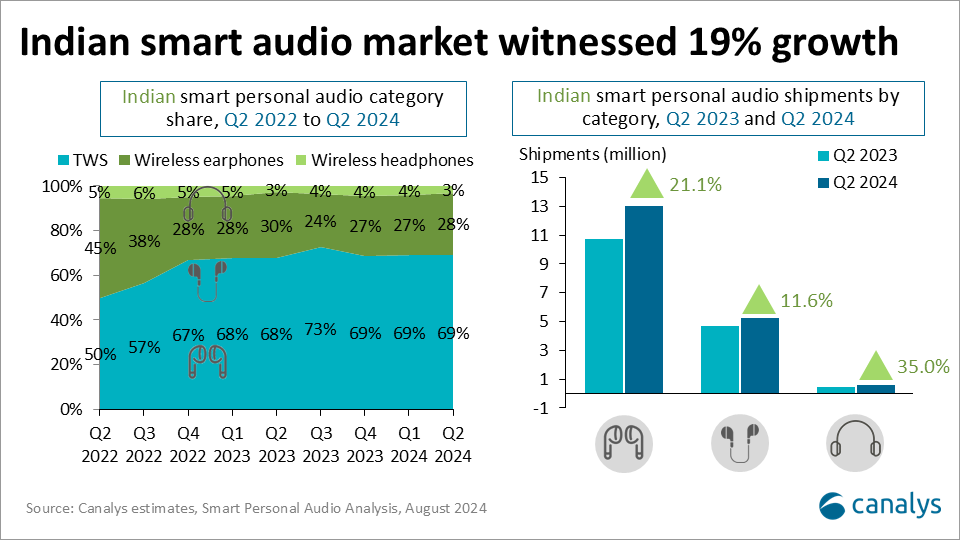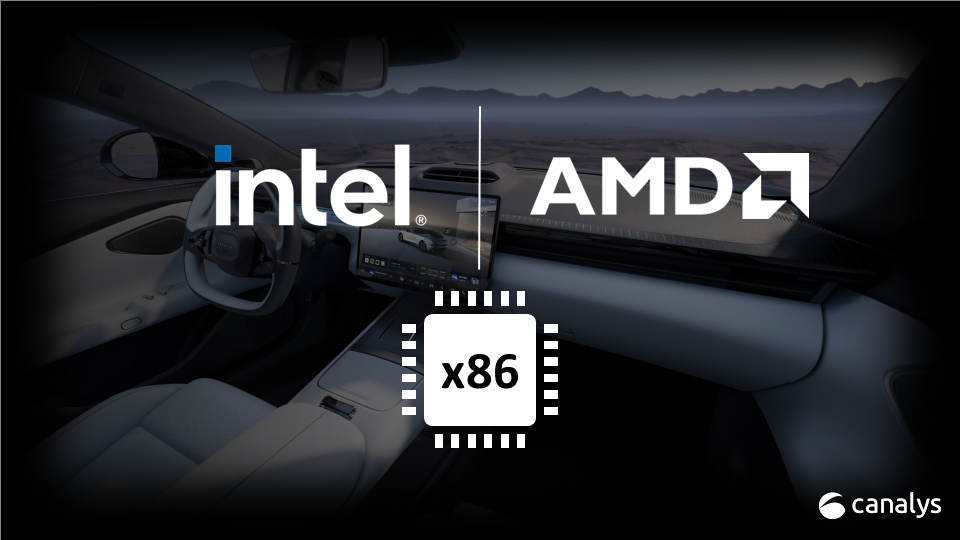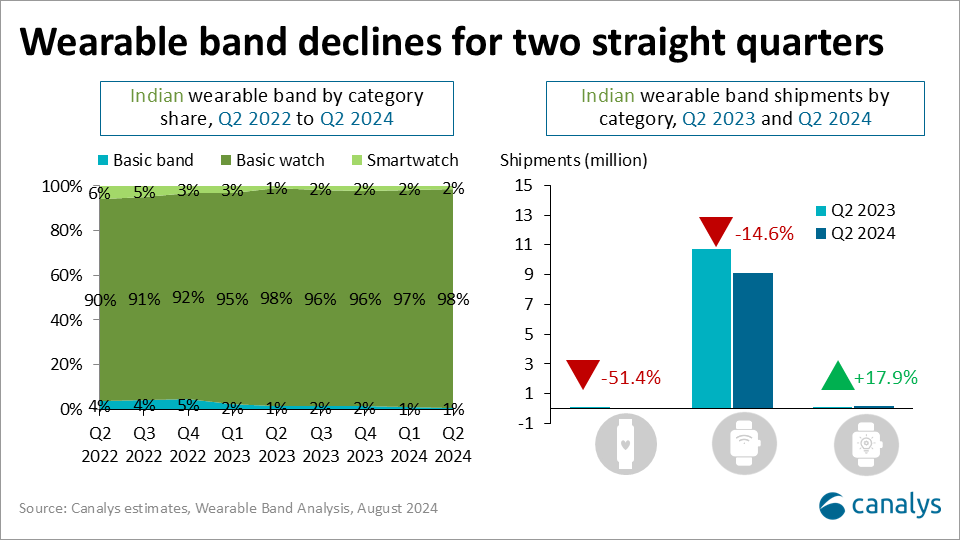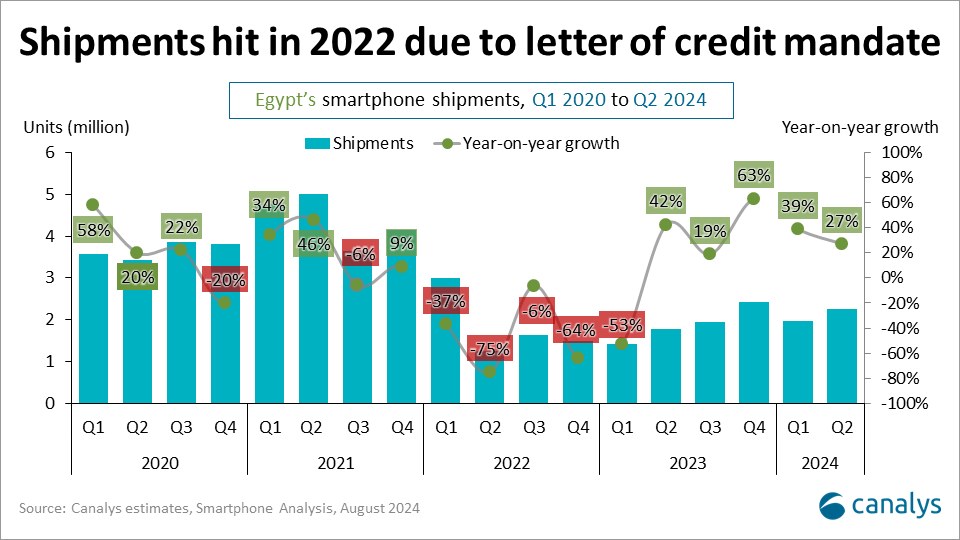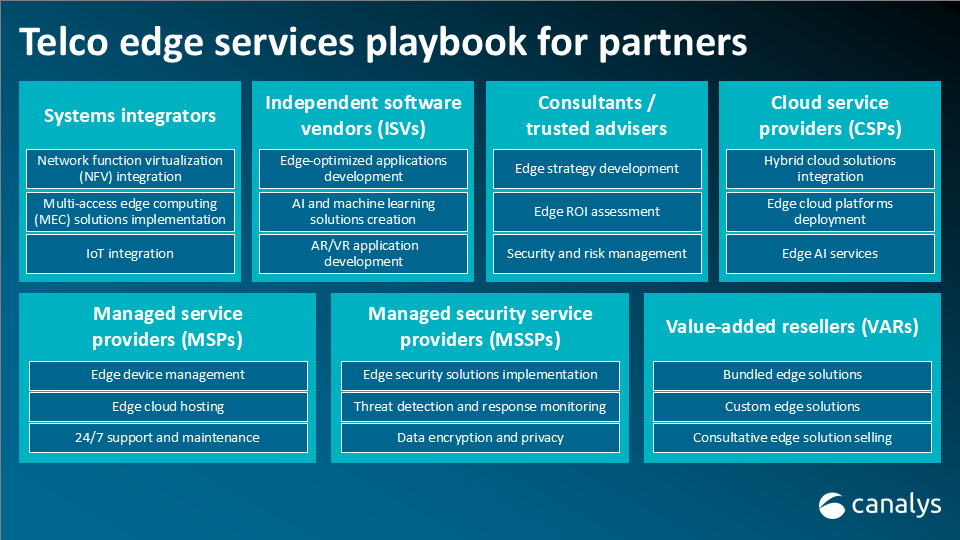Canalys is part of Informa PLC
This site is operated by a business or businesses owned by Informa PLC and all copyright resides with them. Informa PLC’s registered office is 5 Howick Place, London SW1P 1WG. Registered in England and Wales. Number 8860726.
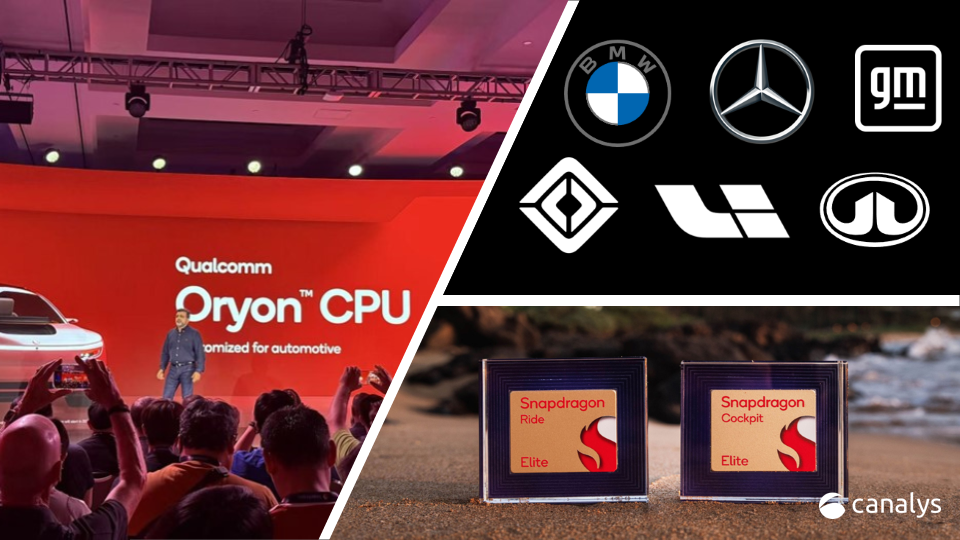
Qualcomm’s latest Snapdragon Elite automotive SoCs and strategic focus
Qualcomm's latest Snapdragon Cockpit Elite and Snapdragon Ride Elite SoCs, powered by the Oryon CPU, have revolutionized automotive computing with advanced AI capabilities, catering to the ever-evolving demands of the industry. Through strategic partnerships, Qualcomm aims to solidify its position in the automotive sector by delivering scalable solutions, addressing customization trends among Chinese automakers and enhancing consumer appeal in collaboration with renowned brands.

At the Snapdragon Summit 2024, Qualcomm unveiled its latest automotive processors, the Snapdragon Cockpit Elite and Snapdragon Ride Elite SoCs. These top-tier chipsets, powered by Qualcomm's Oryon CPU, bring advanced compute and AI capabilities to the company’s successful Digital Chassis platform, designed to future-proof vehicles with scalable, high-performance solutions. Qualcomm’s ongoing strategy aims to lead AI innovation in automotive, bolster its marketing and address the growing trend of customization among Chinese automakers.
Qualcomm’s AI development strategy for automotive
Qualcomm’s approach to AI in automotive is deeply tied to its commitment to in-vehicle intelligence and real-time processing. With increasing compute demands from OEMs, especially in China, Qualcomm seeks to make vehicles capable of handling complex, evolving tasks via on-device AI. Key highlights include:
- Real-time processing and contextual awareness: Qualcomm prioritizes on-device AI to enable quick, reliable data processing which is crucial in applications like ADAS and automated driving, where responsiveness impacts safety.
- AI hub and model optimization: the AI hub platform integrates core AI capabilities, offering tools for developing and optimizing models for on-device performance, which reduces latency and enables more fluid, real-time applications for drivers.
- Google partnership: Qualcomm’s collaboration with Google enhances AI capabilities by balancing edge and cloud processing. This includes generative AI for digital cockpits, with Google providing cloud-based support for real-time upgrades and in-car experiences, potentially expanding the penetration of “Google Built-in” vehicles and driving Google’s presence in the automotive sector.
Automotive SoCs now efficiently manage complex data processing, sensor fusion and multimodal interactions for building a local knowledge graph, enabling reliable AI features and advancements like autonomous driving. Qualcomm aims to enhance the efficient use of computing performance through improved development tools and systems, accelerating AI development for tier-one suppliers and automakers.
Marketing strengths: building automotive consumer appeal
Qualcomm’s brand dominance in smartphones — driven by its focus on photography, gaming and AI — has helped it gain consumer visibility. In automotive, Qualcomm is now working to translate this brand recognition by collaborating with automakers and consumer-facing events:
- High-profile collaborations: collaborations with brands like Mercedes and BMW exemplify Qualcomm’s strength in digital cockpits and ADAS, showcasing its technology across premium, high-exposure platforms. Additionally, partnerships with Li Auto and Great Wall Motors highlight Qualcomm’s role in providing global visibility to major Chinese automakers.
- Consumer reach: partnering with F1 and brands such as Mercedes-AMG Petronas F1 Team, Qualcomm extends its influence into areas that resonate with consumers beyond tech circles. This cross-platform branding makes the Snapdragon name recognizable, although replicating similar success in automotive will require conveying how its tech directly enhances driving experiences.
Canalys estimates indicate that Qualcomm controls a 67% market share in China's digital cockpit domain controller market for H1 2024, but its influence in ADAS is limited. To enhance its presence in ADAS, Qualcomm should consider partnering with innovative EV manufacturers like Xiaomi. Despite being new to the automotive sector, Xiaomi has proven capable of producing cars with unique intelligent features. A collaboration could lead to the development of a distinctive ADAS system based on Qualcomm’s solutions.
Addressing customization demands from Chinese automakers
Canalys' latest China Digital Cockpit SoC vendor Leadership Matrix research indicates that Chinese carmakers are increasingly seeking customized SoCs that meet specific needs. Qualcomm faces the challenge of balancing bespoke solutions with scalable, unified platforms. Many Chinese OEMs now seek SoCs that align precisely with their product roadmaps. Qualcomm’s approach however, favors adaptable platforms that prioritize long-term sustainability and ease of integration:
- Economies of scale and flexibility: Qualcomm’s scalable platforms help keep costs manageable by standardizing core components that can be tailored across vehicle segments, reducing the need for extensive customization.
- Long-term support: emphasizing longevity, Qualcomm commits to offering software updates throughout the vehicle’s lifecycle, ensuring that safety-critical functions remain up-to-date and that platforms remain adaptable over time. This approach is attractive for OEMs looking to create a consistent, future-proofed user experience without major redesigns.
- China-specific adjustments: Qualcomm has tailored its offerings to address the unique needs of the Chinese market, focusing on AI and security. Qualcomm’s ability to adjust its planning and software requirements, especially in these areas, has helped solidify its position in the market.
Qualcomm’s sustained focus on scalable solutions rather than extensive customization appeals to automakers seeking versatile, reliable SoCs.
Qualcomm must secure ongoing ecosystem support
Qualcomm’s Snapdragon Elite SoCs present promising advancements, yet significant challenges remain, especially as competitors focus on AI capabilities, energy efficiency, hardware isolation and customizability — critical demands from Chinese automakers. As tier-one suppliers and ecosystem partners play a pivotal role in scaling Qualcomm’s solutions, the company must fortify these alliances to stay competitive. To maintain its leadership, Qualcomm should closely monitor chiplet technology developments and proactively expand its customizable offerings when the needs arise. Expanding adaptability and deepening partnerships will be essential for Qualcomm to sustain its influence and meet the fast-changing demands of the global automotive market.
